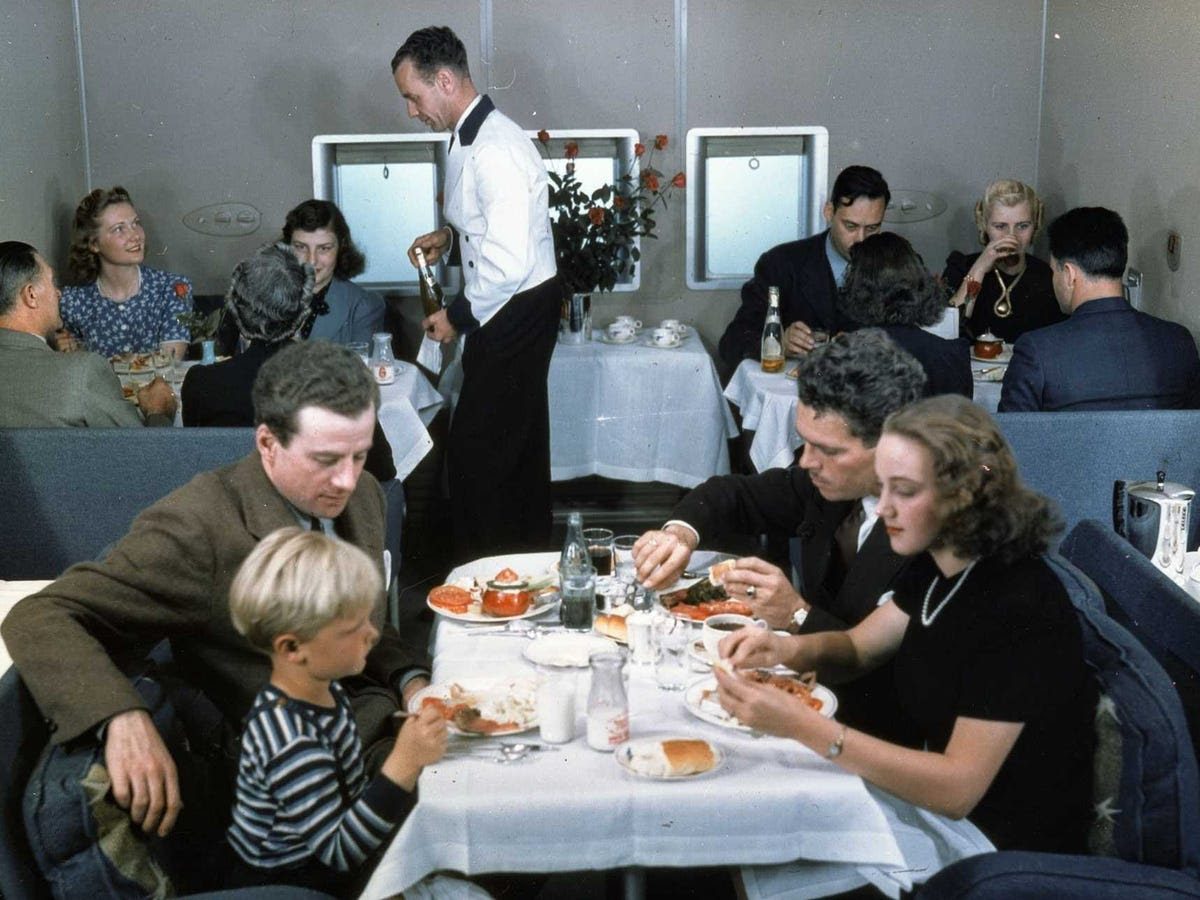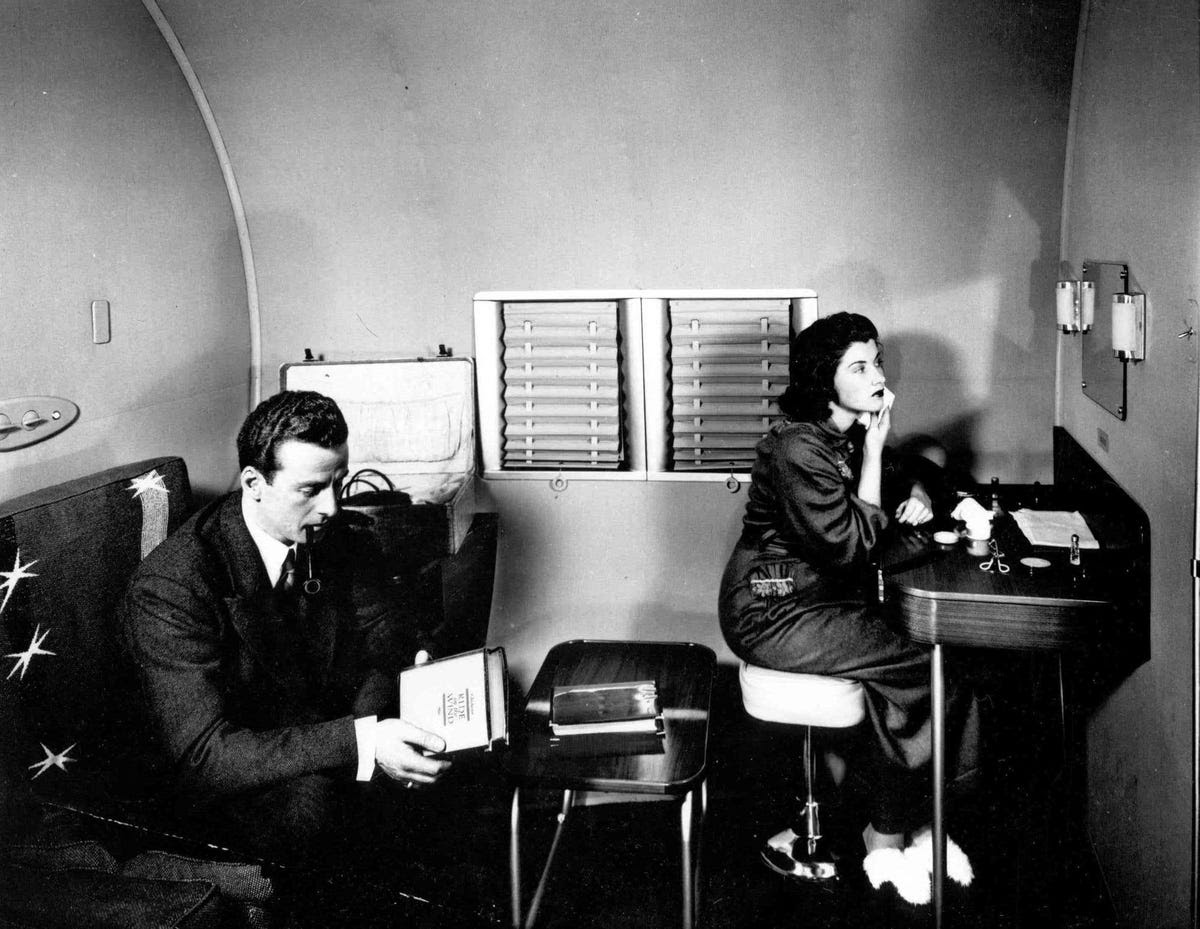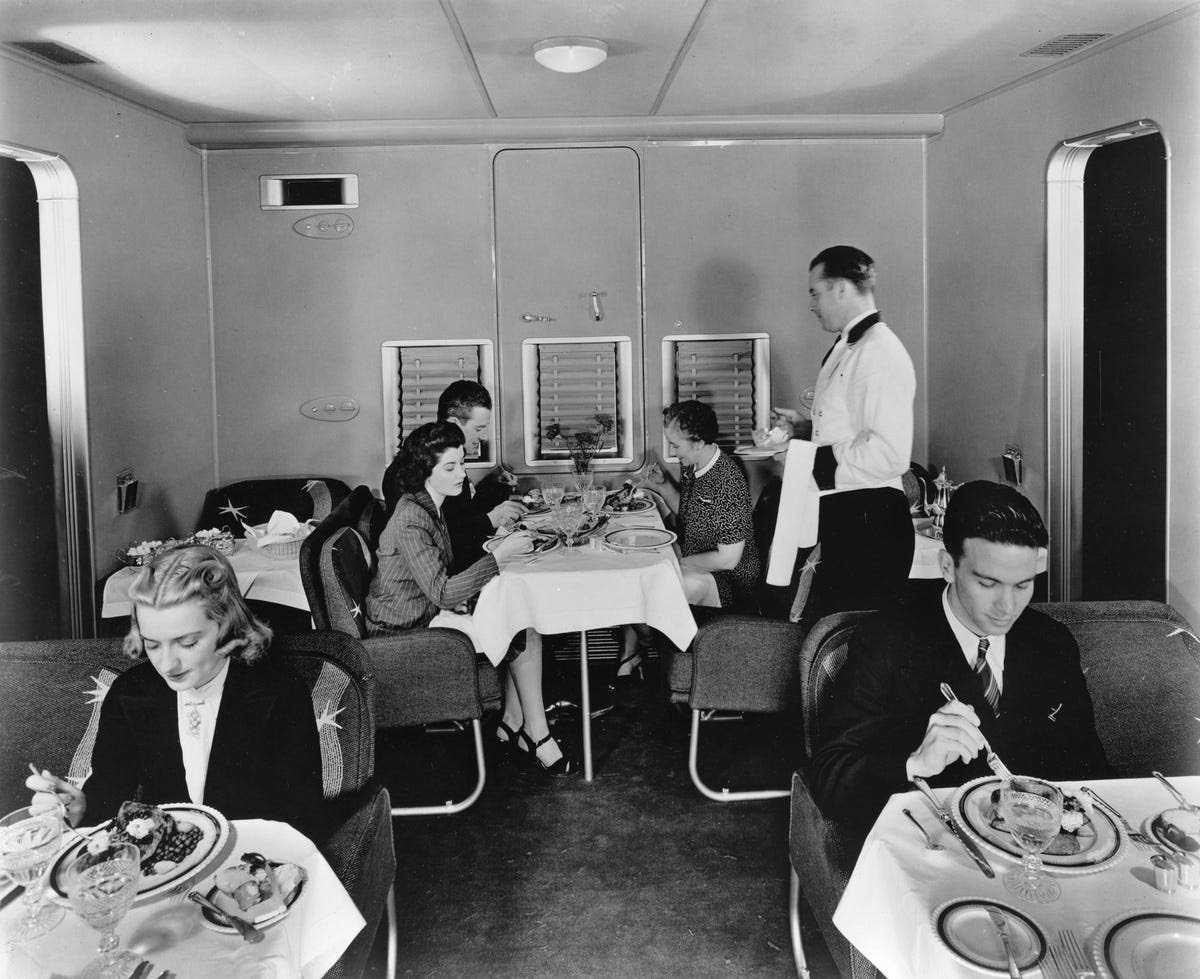Clipper passengers took their meals at real tables, not their seats. For most travelers in the 21st century, flying is a dreary experience, full of inconvenience, indignity, and discomfort.
That wasn't the case in the late 1930s, when those with the money to afford trans-oceanic flight got to take the Boeing Model 314, better known as the Clipper. Even Franklin Roosevelt used the plane, celebrating his 61st birthday on board.
Between 1938 and 1941, Boeing built 12 of the jumbo planes for Pan American World Airways.
The 314 offered a range of 3,500 miles — enough to cross either the Atlantic or Pacific —and room for 74 passengers onboard.
Of course, modern aviation offers an amazing first class experience (and it's a whole lot safer), but nothing in the air today matches the romanticism of crossing the ocean in the famed Clipper.
Thanks to the Pan Am Historical Foundation for sharing its photos. The foundation is currently working on a documentary about Pan American World Airways and the adventure of the flying boat age. Find out more here.
The Model 314's nickname Clipper came from an especially fast type of sailing ship, used in the 19th century.
The ship analogy was appropriate, as the Clipper landed on the water, not runways.
Here's a diagram of the different areas of the plane.
On Pan Am flights, passengers had access to dressing rooms and a dining salon that could be converted into a lounge or bridal suite.
The galley served up meals catered from four-star hotels.
If you want to sit at a table to eat with other people these days, you have to fly in a private jet.
There was room for a crew of 10 to serve as many as 74 passengers.
On overnight flights, the 74 seats could be turned into 40 bunks for comfortable sleeping.
The bunk beds came with curtains for privacy.
On the 24-hour flights across the Atlantic, crew members could conk out on these less luxurious cots.
Unlike some modern jets that come with joysticks, the Clipper had controls that resembled car steering wheels.
Navigating across the ocean used to require more manpower in the air.
The lavatory wasn't too fancy, but it did have a urinal — something you never see in today's commercial jets, where space is at a premium.
The ladies lounge had stools where female passengers could sit and do their makeup.
The Clipper made its maiden trans-Atlantic voyage on June 28, 1939.
But once the US entered World War II, the Clipper was pressed into service to transport materials and personnel.
In 1943, President Franklin Roosevelt celebrated his 61st birthday on board.





















